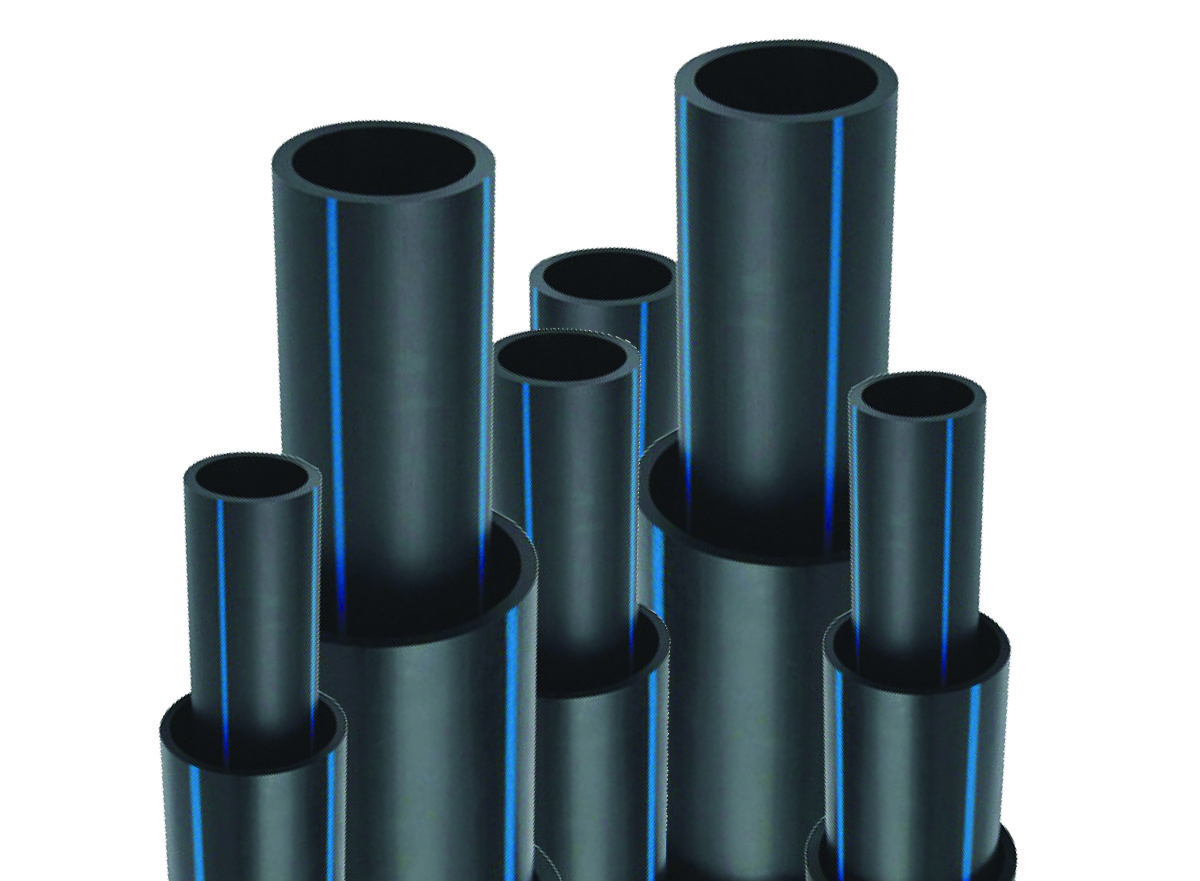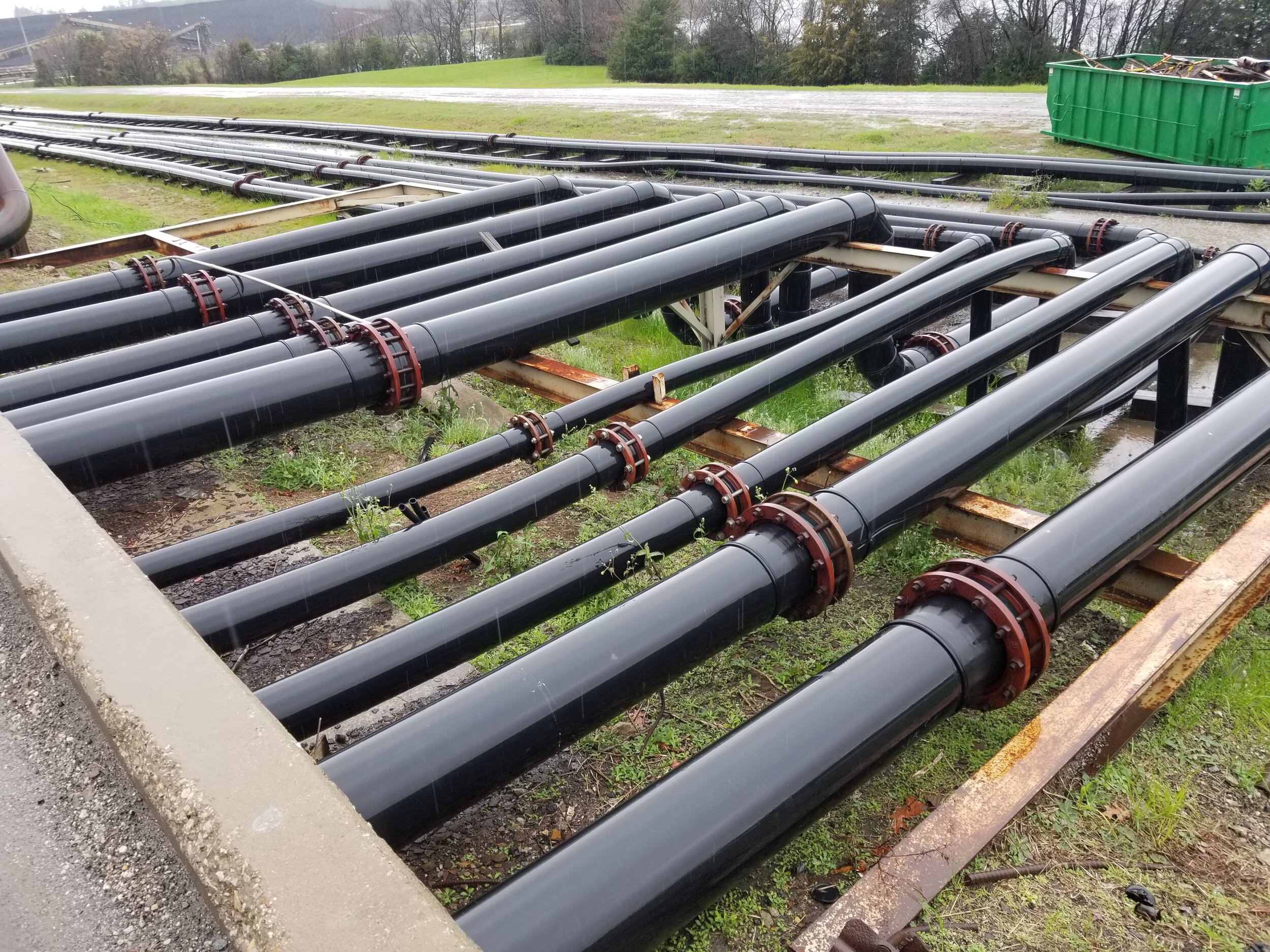Why Builders Prefer hdpe pipe in stock Midland TX for Immediate Projects
Check Out the Manufacturing Process Behind High-Quality HDPE Pipe and Its Applications
The production procedure of high-quality HDPE pipes is elaborate and methodical. It begins with the selection of basic materials that enhance performance. Following this, ethylene undergoes polymerization to create material, which is then formed through extrusion. Quality assurance is critical, making sure that the end product meets stringent requirements. The trip of HDPE pipelines doesn't end with production. Their applications across various industries disclose a wider importance worth checking out.
Recognizing HDPE: Properties and Advantages

High-density polyethylene (HDPE) is a flexible polycarbonate known for its sturdiness and resistance to various environmental variables. This material shows excellent tensile stamina, making it suitable for demanding applications. Its low-density structure adds to a light-weight product, assisting in convenience of dealing with and installation. HDPE also showcases remarkable resistance to chemicals, which decreases degradation when revealed to rough substances.
The material's low dampness absorption additionally enhances its durability, making it suitable for usage in pipelines and storage containers. Furthermore, HDPE is immune to ultraviolet (UV) radiation, guaranteeing that items maintain their honesty even when subjected to sunlight. Its versatility enables for the production of intricate shapes without compromising strength. The eco-friendly nature of HDPE, frequently derived from recycled products, contributes to its appeal, promoting lasting techniques in production. On the whole, these residential or commercial properties and benefits make HDPE a favored option for numerous industrial and customer applications.
Resources Choice for HDPE Production
The selection of resources for HDPE manufacturing is necessary to validate the end product satisfies the desired requirements and top quality standards. High-density polyethylene (HDPE) is largely created from polymerized ethylene, obtained from nonrenewable fuel sources such as natural gas or petroleum. The quality of these feedstocks greatly affects the mechanical and thermal buildings of the final HDPE.
Additives likewise play a considerable role in enhancing HDPE's efficiency, consisting of antioxidants, UV stabilizers, and colorants, which enhance durability and resistance to ecological factors. The selection process must consider not just the chemical make-up of the raw materials yet additionally their processing attributes to assure efficient production.
Additionally, the sourcing of basic materials should focus on sustainability and compliance with ecological laws, as liable techniques are important in today's market. Eventually, careful raw material option lays the structure for creating top notch HDPE pipes suitable for varied applications.
The Extrusion Refine: Shaping HDPE Pipeline
The extrusion procedure plays a crucial role fit HDPE pipelines, beginning with careful product prep work methods that guarantee suitable flow and uniformity. Just as important is the layout of the die, which directly influences the final measurements and surface area quality of the pipeline. Together, these factors contribute greatly to the performance and high quality of HDPE pipeline manufacturing.
Product Prep Work Techniques
Reliable manufacturing of HDPE pipes begins with precise product prep work strategies, specifically the extrusion procedure. During this stage, high-density polyethylene material is initial dried out to remove moisture, guaranteeing suitable flow qualities. The resin is then fed right into the extruder, where it undergoes home heating and melting, transforming into a thick state. This home heating procedure is meticulously regulated to maintain the product's stability and performance. The molten HDPE is forced with a die, forming it into a constant pipeline kind. Appropriate temperature level monitoring during extrusion is crucial, as it directly affects the material's residential or commercial properties and the end product quality. As soon as formed, the HDPE pipeline is cooled down and cut to specified sizes, all set for subsequent processing and applications.
Die Design Importance
Accuracy in die layout plays a necessary role in the extrusion procedure of HDPE pipes. The die works as the final shaping device, directly affecting the pipe's dimensions, wall surface thickness, and surface area coating. A properly designed die assurances uniform material flow, decreasing defects such as irregularities and weak spots. The geometry of the die have to be optimized to accommodate the certain buildings of HDPE, including its thickness and thermal behavior throughout extrusion. In addition, the cooling price of the material More Info as it travels through the die can considerably affect the pipeline's structural stability. Consequently, spending in innovative die technology is crucial for suppliers aiming to generate premium HDPE pipes that satisfy industry criteria and client assumptions.
High Quality Control Actions in HDPE Production
Various variables influence the high quality of HDPE pipe production, effective quality control actions are important to assure uniformity and reliability in the final product (hdpe pipe suppliers Midland TX). Key quality control methods include rigorous material evaluation, confirming that the raw polyethylene fulfills well established criteria for purity and thickness. During the extrusion procedure, criteria such as temperature, pressure, and cooling time are carefully kept an eye on to preserve dimensional accuracy and architectural integrity
On top of that, post-production testing is crucial; producers often perform hydrostatic tests to assess the pipe's toughness and resistance to pressure. Aesthetic assessments for surface flaws even more boost quality control. Certification from pertinent standards companies, like ASTM or ISO, supplies an additional layer of trustworthiness. By executing these complete high quality control procedures, producers can minimize issues, enhance performance, and make certain that the HDPE pipes satisfy the particular requirements of numerous applications, eventually bring about customer satisfaction and trust in the product.
Applications of HDPE Pipeline Throughout Industries
HDPE pipes are utilized across numerous industries due to their sturdiness and flexibility. In water circulation systems, they guarantee effective delivery, while in wastewater management, they give reputable remedies for waste transport. In addition, agricultural irrigation networks take advantage of HDPE's resistance to corrosion and versatility, making it a suitable resource choice for contemporary farming methods.

Water Distribution Solutions
A significant variety of markets rely on high-density polyethylene (HDPE) pipes for reliable water distribution systems. Recognized for their longevity and resistance to corrosion, HDPE pipelines are extensively utilized in local supply of water networks, farming irrigation, and industrial applications. Their light-weight nature helps with very easy handling and setup, lowering labor expenses and time. In addition, HDPE pipes can accommodate numerous pressure degrees, making them appropriate for both low and high-pressure systems. American Plastics HDPE Pipe Manufacturing. The adaptability of the material allows for smooth assimilation right into existing infrastructure, decreasing the demand for substantial excavation. Additionally, HDPE's resistance to chemical seeping warranties that the water delivered stays safe and tidy, making it a perfect choice for preserving the quality of drinkable water throughout numerous fields
Wastewater Administration Solutions
Efficient water circulation systems likewise lead the method for cutting-edge wastewater monitoring services, where high-density polyethylene (HDPE) pipes play a significant duty. Popular for their toughness and resistance to corrosion, HDPE pipes are excellent for transferring wastewater in various setups. Their flexibility enables very easy installation in complex environments, decreasing the need for extensive excavation. Furthermore, HDPE's smooth indoor surface area minimizes rubbing, boosting circulation prices and performance. These pipelines are additionally resistant to chemical leaching, guaranteeing that pollutants do not jeopardize the surrounding environment. Industries, towns, and therapy centers progressively count on HDPE pipes for their integrity and durability, making them a favored discover this option for modern wastewater administration systems. This versatility emphasizes the crucial significance of HDPE pipelines throughout numerous applications.
Agricultural Watering Networks
Agricultural watering networks benefit greatly from making use of high-density polyethylene (HDPE) pipes, which offer reliable and reputable water distribution to plants. HDPE pipes are light-weight, making them very easy to transfer and set up, while their adaptability enables various setups in diverse surfaces. These pipelines demonstrate outstanding resistance to deterioration, chemicals, and UV radiation, making sure durability in severe agricultural atmospheres. In addition, their smooth indoor surface area decreases rubbing loss, maximizing water flow and minimizing energy costs associated with pumping. The longevity of HDPE pipes, frequently surpassing 50 years, adds to reduce upkeep and substitute expenditures. Subsequently, farmers significantly depend on HDPE pipelines to improve watering performance and promote lasting agricultural techniques, eventually causing enhanced plant yields and resource preservation.
Future Patterns in HDPE Pipe Technology
As the need for sustainable and reliable framework grows, improvements in HDPE pipe technology are poised to transform various sectors. Arising patterns consist of the integration of clever innovations, such as sensing units and IoT abilities, which facilitate real-time monitoring of pipeline problems, lowering upkeep costs and stopping leaks. In addition, the development of advanced manufacturing methods, such as 3D printing, is allowing the production of complicated, personalized pipe designs that accommodate certain task needs.
Furthermore, the concentrate on recycling and circular economy techniques is driving the technology of HDPE pipes made from recycled materials, improving sustainability. Boosted jointing approaches, such as electro-fusion and mechanical installations, are likewise enhancing setup performance and integrity. Lastly, the expanding emphasis on environmental laws is pushing makers to adopt greener production procedures, making sure that HDPE pipes not only satisfy market criteria yet also cultivate a more sustainable future for infrastructure growth.
Often Asked Concerns
Exactly How Does HDPE Compare to Various Other Plastic Materials?
HDPE surpasses lots of other plastic materials regarding resilience, chemical resistance, and adaptability. Its reduced density and high tensile strength make it suitable for numerous applications, commonly going beyond choices in both performance and durability.
What Are the Environmental Effects of HDPE Production?
The environmental effects of HDPE manufacturing consist of greenhouse gas emissions, energy consumption, and potential pollution from producing processes. Additionally, inappropriate disposal can result in dirt and water contamination, elevating worries regarding long-term ecological impacts.
Can HDPE Pipes Be Recycled?
Yes, HDPE pipelines can be recycled. Numerous facilities accept made use of HDPE for handling, changing it right into brand-new products. This recycling adds to sustainability initiatives, reducing plastic waste while saving resources and power in the manufacturing cycle.
What Is the Life Expectancy of HDPE Water Lines?

How Do Temperature Level Variations Impact HDPE Pipeline Performance?
Temperature level variations significantly affect HDPE pipe performance, impacting adaptability and toughness. Heats can bring about softening, while reduced temperature levels may cause brittleness, eventually affecting the pipeline's longevity and suitability for various applications in diverse settings.